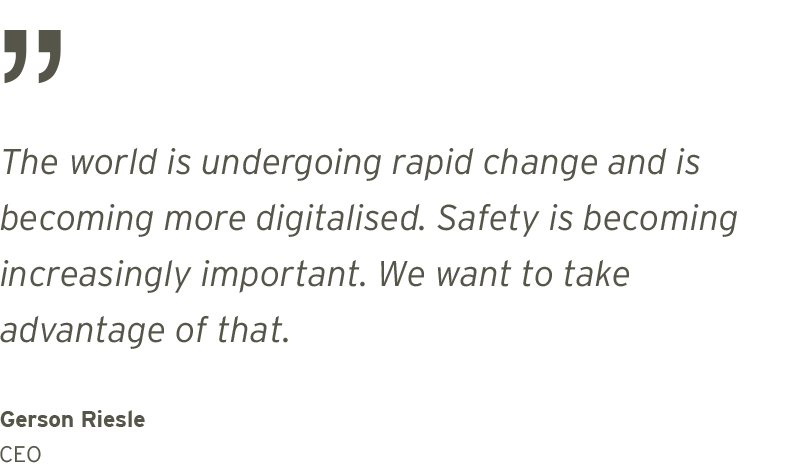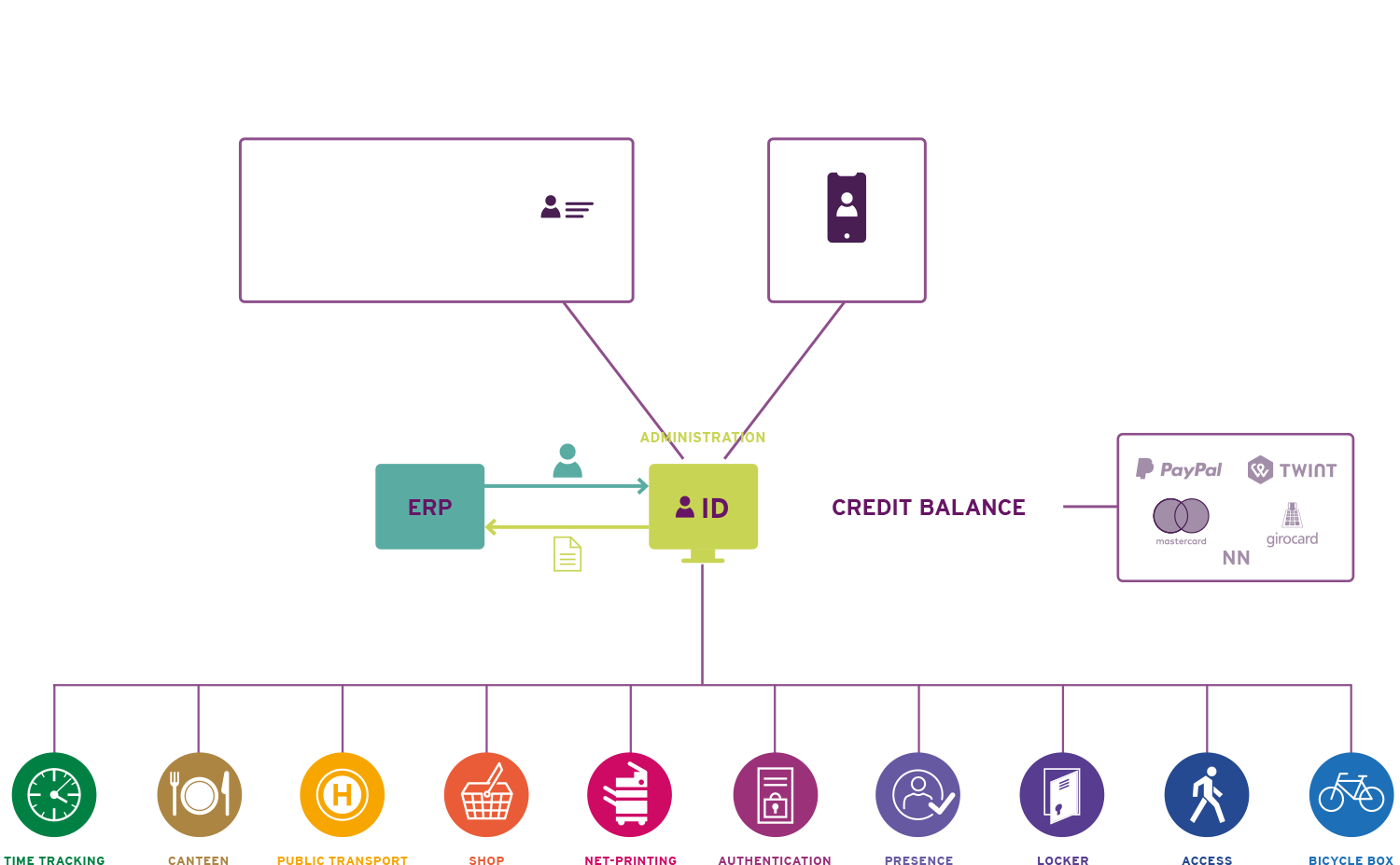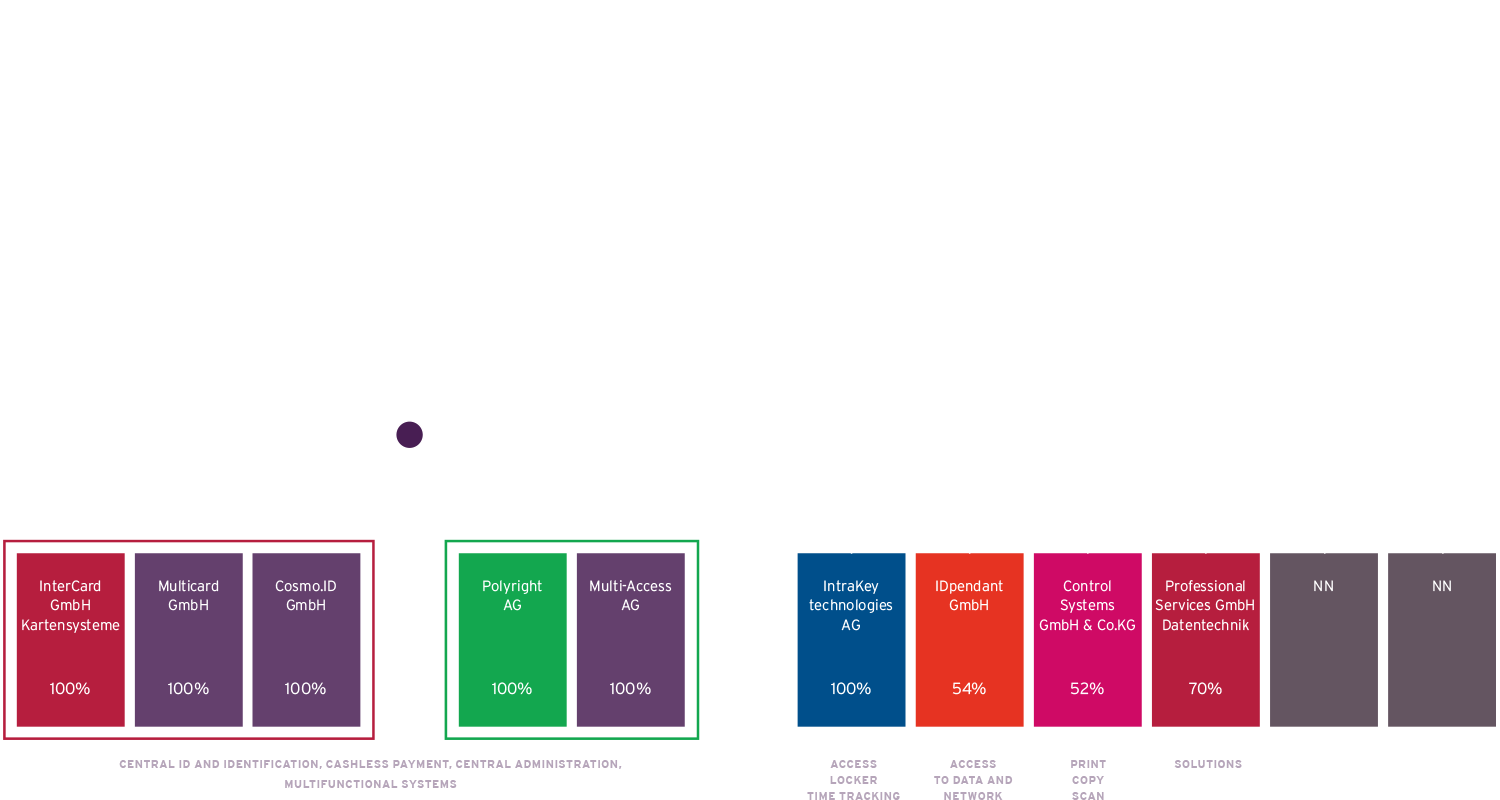
InterCard in 2020 and in the future
We made use of the year 2020 to set our course for more innovation, new markets and further growth.
We have transformed our chipcard system into a central ID system that can already do much more than just identify an individual and enable payments with the chipcard. The new system no longer processes and stores a large part of all relevant data decentrally on the chipcard, but centrally within the system, thereby enabling a maximal amount of interconnection: from the ERP system to the smartphone and also across several systems – and in real time. In order to achieve this we have brought together the best elements of all systems in our companies, have developed them further and thereby set new standards. The result is the ID system for the next generation.
New licence models are being established. For registered users or connected solutions. We have opened up our new system for established payment systems, accepting payment partners like PayPal and credit card companies, which we integrate into the appropriate business model. And we are constantly incorporating new applications into our ID system: these currently include secure identification when accessing data and also identification and payment at charging stations for e-mobility. We want to become the new standard for secure personal ID through our central ID management and its flexible interfaces.

When we reached a turnover of EUR 10 million, we set ourselves the task of doubling it. Now, with a turnover of more than EUR 20 million, we are aiming to do the same again. While our new systems and business models form the basis for organic growth, targeted additional takeovers are speeding up our way forward. This year our profit will probably be strained by the particular circumstances, but we want to become more efficient year by year, to scale our result better and hence to grow disproportionately.
We decided years ago that we could not achieve this alone, because within our market, any company that is alone will either be too slow or will have costs that are too high. Today we consist of eight companies forming a large team that can make use of the diversity of ideas and the dynamism of small structures and integrate in those areas where it will help our purpose.
With development teams in Villingen-Schwenningen, Dresden, Sion, New York and Valencia we are working together to develop the best ID system. To achieve this we bring people, technologies, markets and business models together in new ways.
In the future we shall continue this successful balance of corporate takeovers and integration, but faster and more systematically. Accordingly, during this year we are merging companies which are working together in any case and we are defining joint management structures over and above part of the companies. The aim is to form a big, strong team under a new common brand. When taking over companies, we want to speed things up at the same time. We want to bond new companies to ours with additional capital, so that we can become a truly notable player within our markets, both nationally and internationally.

The years 2020 and 2021 have been years full of surprises, risks and opportunities. The world is undergoing rapid change and is becoming more digitalised. Safety is becoming increasingly important. We want to take advantage of that. During this year in particular I should like to express my respect for the staff of all our companies. Together with our customers everywhere in Germany and Switzerland, they have always found appropriate solutions. Either at work in the office or when working from home.
And therefore I am very confident that we shall also be able to realise our ambitious goals in the same way.
Gerson Riesle
CEO
IR Contact
Stefan Thoma
SECANDA AG
Marienstrasse 10
D-78054 Villingen-Schwenningen
Phone: +49 7720 – 9945 – 48
Fax: +49 7720 – 9945 – 10
E-mail: investor.relations@wordpress.intrakey.de
Disclaimer for forward-looking statements
The documents provided on this website contain statements related to our future business and financial performance and future events or developments involving SECANDA Group that may constitute forward-looking statements. These statements may be identified by words such as “expect,” “look forward to,” “anticipate,” “intend,” “plan,” “believe,” “seek,” “estimate,” “will,” “project” or words of similar meaning. We may also make forward- looking statements in other reports, in prospectuses, in presentations, in material delivered to shareholders and in press releases. In addition, our representatives may from time to time make oral forward-looking statements. Such statements are based on the current expectations and certain assumptions of SECANDA’s management, of which many are beyond SECANDA’s control. These are subject to a number of risks, uncertainties and factors, including, but not limited to, those described in disclosures, in particular in the chapter Report on expected developments and associated material opportunities and risks in the Annual Report and in the Half-year Financial Report, which should be read in conjunction with the Annual Report. Should one or more of these risks or uncertainties materialize, events of force majeure, such as pandemics, occur or should decisions, assessments or requirements of regulatory authorities deviate from our expectations, or should underlying expectations including future events occur at a later date or not at all or assumptions prove incorrect, actual results, performance or achievements of SECANDA may (negatively or positively) vary materially from those described explicitly or implicitly in the relevant forward-looking statement. SECANDA neither intends, nor assumes any obligation, to update or revise these forward-looking statements in light of developments which differ from those anticipated.
All documents are available as an English translation; in the event of discrepancies, the German version of the document takes precedence over the English translation. For technical reasons, there may be discrepancies between the accounting documents contained in this document and those published due to legal requirements.
The documents provided on this website contain statements related to our future business and financial performance and future events or developments involving SECANDA Group that may constitute forward-looking statements. These statements may be identified by words such as “expect,” “look forward to,” “anticipate,” “intend,” “plan,” “believe,” “seek,” “estimate,” “will,” “project” or words of similar meaning.
> weiterlesen
We may also make forward- looking statements in other reports, in prospectuses, in presentations, in material delivered to shareholders and in press releases. In addition, our representatives may from time to time make oral forward- looking statements. Such statements are based on the current expectations and certain assumptions of SECANDA’s management, of which many are beyond SECANDA’s control. These are subject to a number of risks, uncertainties and factors, including, but not limited to, those described in disclosures, in particular in the chapter Report on expected developments and associated material opportunities and risks in the Annual Report and in the Half-year Financial Report, which should be read in conjunction with the Annual Report. Should one or more of these risks or uncertainties materialize, events of force majeure, such as pandemics, occur or should decisions, assessments or requirements of regulatory authorities deviate from our expectations, or should underlying expectations including future events occur at a later date or not at all or assumptions prove incorrect, actual results, performance or achievements of SECANDA may (negatively or positively) vary materially from those described explicitly or implicitly in the relevant forward-looking statement. SECANDA neither intends, nor assumes any obligation, to update or revise these forward-looking statements in light of developments which differ from those anticipated.
All documents are available as an English translation; in the event of discrepancies, the German version of the document takes precedence over the English translation. For technical reasons, there may be discrepancies between the accounting documents contained in this document and those published due to legal requirements.
> weniger
